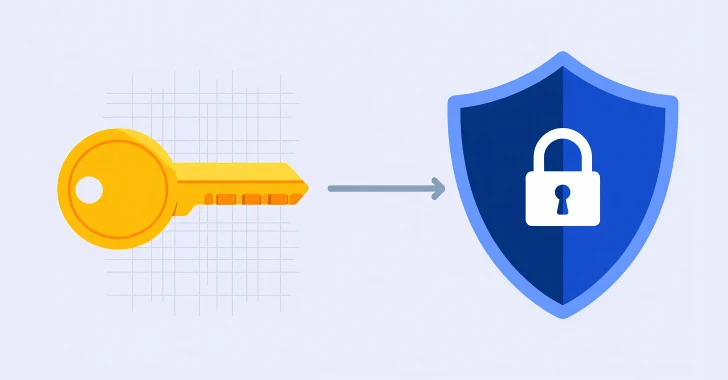
Google Launches DBSC Open Beta in Chrome and Enhances Patch Transparency via Project Zero
Google Fortifies Chrome with DBSC Open Beta: A New Era for Session Security
The digital landscape is a constant battleground, with cybercriminals continually refining their tactics. Among the most pervasive and insidious threats are session cookie theft attacks, which allow attackers to impersonate legitimate users and gain unauthorized access to sensitive accounts. Google has stepped up its defense with the announcement of the Device Bound Session Credentials (DBSC) open beta in Chrome, a significant stride towards mitigating this critical vulnerability. This initiative, coupled with enhanced patch transparency via Project Zero, signals a more proactive and user-centric approach to browser security.
Understanding Device Bound Session Credentials (DBSC)
At its core, DBSC is designed to create a robust link between an authentication session and the specific device used to initiate it. First introduced as a prototype in April 2024, DBSC prevents threat actors from exploiting stolen cookies to gain unauthorized access to user accounts. Traditionally, if an attacker intercepts a session cookie, they can simply replay it from a different machine to bypass authentication mechanisms. DBSC fundamentally changes this paradigm by binding the session to hardware, making stolen cookies useless on an unauthorized device.
Imagine a scenario where your login credentials for an online service are compromised. Without DBSC, an attacker who obtains your session cookie could log in as you from their own computer. With DBSC, that stolen cookie becomes inert because it’s no longer tied to your unique device. This significantly enhances user protection against common attack vectors like malware-laced plugins, phishing scams, and cross-site scripting (XSS) attacks designed to siphon off session data.
How DBSC Enhances User Protection
- Mitigation of Session Hijacking: DBSC directly counters session hijacking by ensuring that a session cookie is only valid when used from the device it was originally issued to.
- Reduced Impact of Credential Theft: Even if credentials are stolen, the bound nature of the session makes it considerably harder for attackers to exploit them without physical access to the legitimate device.
- Improved Phishing Resistance: While DBSC doesn’t directly prevent phishing, it significantly reduces the impact of successful phishing attempts that aim to steal active session cookies.
- Strengthened Account Security: By adding a hardware-bound layer, DBSC provides a more robust defense than traditional cookie-based authentication alone.
Project Zero and Enhanced Patch Transparency
Google’s commitment to security extends beyond prophylactic measures like DBSC. The announcement of enhanced patch transparency via Project Zero underscores their dedication to open and responsible vulnerability disclosure. Project Zero, Google’s team of security researchers, is renowned for its work in identifying and responsibly disclosing zero-day vulnerabilities in various software and hardware. Increased transparency in their patching process means that the security community and end-users alike will have clearer insights into how vulnerabilities are being addressed and what safeguards are being implemented.
This transparency is crucial for several reasons:
- Faster Remediation: Open communication speeds up the development and deployment of patches across the ecosystem.
- Informed Users: Users can make more informed decisions about updating their software and taking necessary precautions.
- Community Collaboration: It fosters greater collaboration within the cybersecurity community, pooling expertise to address complex threats.
Remediation Actions and Best Practices
While DBSC significantly bolsters Chrome’s security, users and organizations still have a critical role to play in maintaining a secure environment. No single security feature is a silver bullet, and a layered approach remains the most effective defense.
- Keep Chrome Updated: Always ensure your Chrome browser is running the latest version. DBSC and other security enhancements are rolled out via updates.
- Exercise Caution with Links and Downloads: Be wary of suspicious links in emails, messages, or websites. Phishing remains a primary vector for credential and cookie theft.
- Utilize Strong, Unique Passwords: Even with DBSC, strong passwords and multi-factor authentication (MFA) are foundational security practices.
- Install Reputable Antivirus/Anti-Malware Software: Protect your device from malware that could potentially bypass DBSC by compromising the underlying operating system or browser processes.
- Educate Users: For organizations, ongoing cybersecurity awareness training is vital to empower employees to recognize and report suspicious activities.
- Implement Multi-Factor Authentication (MFA): MFA adds a crucial layer of security, making it exponentially harder for attackers to gain access even if they obtain credentials.
- Regularly Clear Browser Cache and Cookies: While DBSC makes stolen cookies less useful, periodic clearing can help mitigate other cookie-related risks.
Conclusion
Google’s introduction of DBSC in open beta for Chrome represents a significant leap forward in addressing the persistent threat of session cookie theft. By binding authentication sessions to specific devices, DBSC renders stolen cookies largely ineffective, thereby enhancing user security against sophisticated attacks. Coupled with increased patch transparency via Project Zero, these initiatives underscore Google’s unwavering commitment to building a more secure web. As DBSC rolls out, it’s a pertinent reminder that proactive security measures, combined with user vigilance and best practices, form the bedrock of a robust defense against ever-evolving cyber threats.





